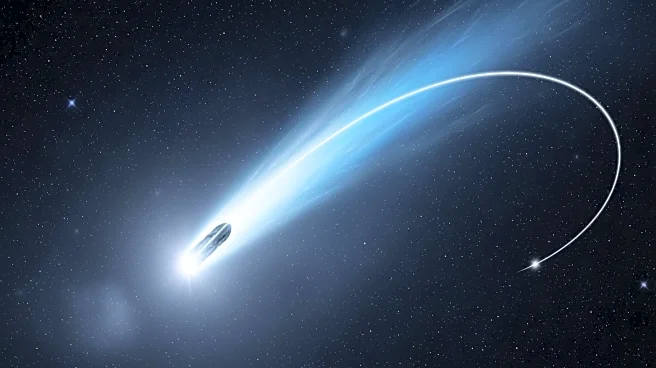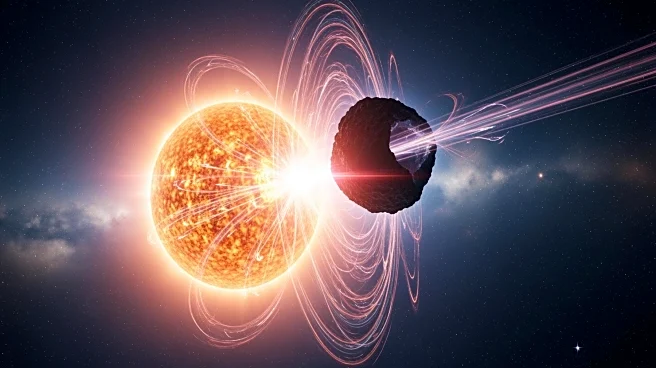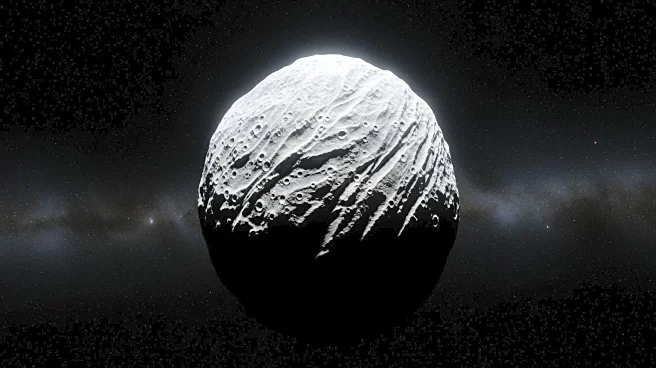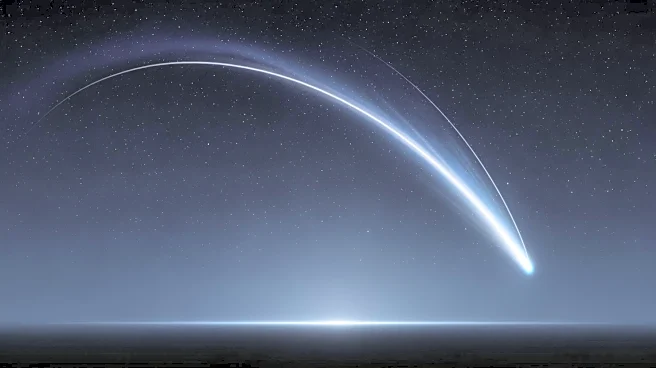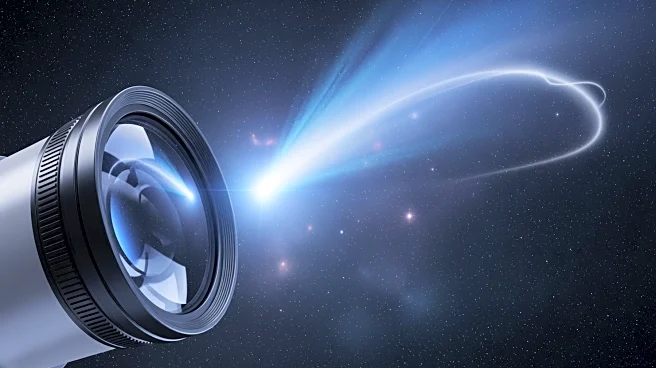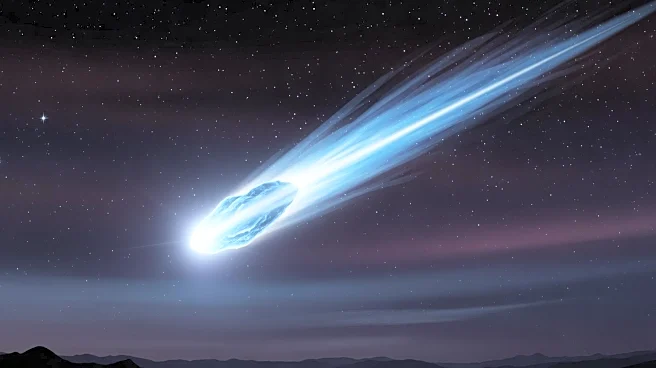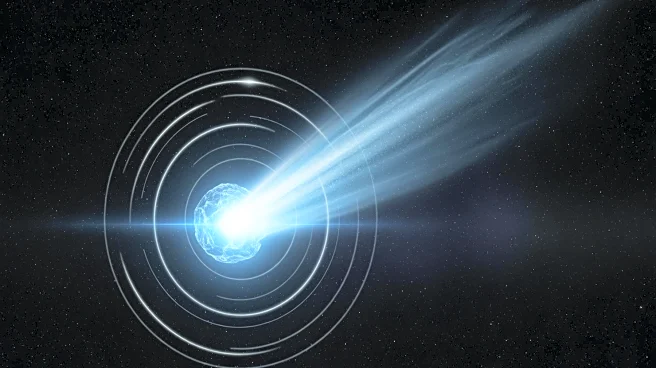What's Happening?
The European Space Agency (ESA) has refined the trajectory of the interstellar comet 3I/ATLAS, which is set to make a safe flyby of Earth in December 2025. This comet, only the third confirmed interstellar object
to pass through our solar system, was first spotted in July 2025. ESA utilized the ExoMars Trace Gas Orbiter to improve predictions of the comet's path, reducing the error margin significantly. Despite viral claims suggesting the comet might be an alien spacecraft or on a collision course with Earth, scientists have debunked these theories, confirming that 3I/ATLAS poses no threat. The comet will pass at a distance of about 1.8 astronomical units from Earth, nearly twice the distance between Earth and the Sun.
Why It's Important?
The refinement of 3I/ATLAS's trajectory is crucial for planetary defense strategies, demonstrating the capability to track and predict the paths of celestial objects accurately. This event provides a real-world rehearsal for handling potentially hazardous objects in the future. The comet's interstellar origin offers a unique opportunity for scientists to study the composition and behavior of objects from outside our solar system, potentially enhancing our understanding of planetary formation and evolution. The public interest and anxiety surrounding the comet highlight the importance of clear communication from scientific bodies to prevent misinformation.
What's Next?
As 3I/ATLAS approaches its closest point to Earth in December, global livestreams are planned to allow the public to observe the comet. The Virtual Telescope Project will host a live event, providing telescope views and scientific commentary. Observations will continue from both ground-based and space-based platforms, including ESA's Juice spacecraft, which is en route to Jupiter. These efforts will contribute to ongoing research and public engagement, ensuring accurate information dissemination and fostering interest in astronomical phenomena.
Beyond the Headlines
The detection of radio emissions from 3I/ATLAS, attributed to hydroxyl radicals, confirms its cometary nature and dispels theories of alien technology. The comet's unusual chemical composition, rich in carbon dioxide, offers insights into the conditions of its original planetary system. This discovery could influence future missions and research, as scientists explore the diversity of planetary systems across the galaxy. The event underscores the importance of scientific inquiry and the need to balance speculation with evidence-based conclusions.
